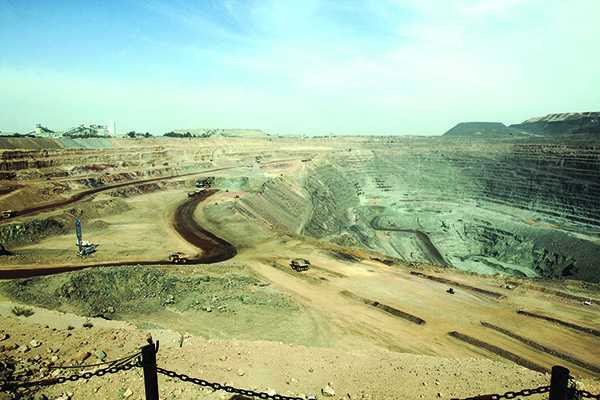GDP muted as mining fails
The country’s Gross Domestic Product expanded slightly in the first three months of 2017, bringing fresh doubts on the recovery of the mining-led economy going forward.
This is according to fresh facts coming from Statistics Botswana, a government-agency tasked with the collection, analysis and publication of key economic and social data periodically. A statement released by the agency’s Head, Anna Majelantle, shows the economy leapfrogged by 0, 8 percent in the three first quarter of the year (Q1:2017) compared to a modest growth of 2, 3 percent in the same period the year before.
The mining sector, which is dominated by diamonds, saw its total output taking a nosedive of 28, 9 percent as a result of BCL closure, depressed diamond markets and fragile recovery of copper prices. In May 2017, copper prices dropped to a 19 month low, on growth concerns from China, the world’s biggest consumer of metal.
“The decrease in the real mining value added of 28.9 percent was because of the closure of copper/nickel mines during the fourth quarter of 2016. In the quarter under review, copper/nickel production was zero due to the provisional liquidation of the BCL mine in October 2016,” said the agency.
Government, the sole owner of BCL group of companies has put BCL and Tati copper mines under an insolvency process, a decision which has effectively put the operation of the mines to a complete halt. The shareholder cited rising cost of running the mines, which was not helped by the declining copper prices at the time for the closure of the two mines, sending thousands of workers into the street.
During the quarter under review, value added by diamonds to the domestic economy slipped by 2, 8 percent. Statistics Botswana stated the reason for the fall in diamond output was in part due to the vulnerability of diamond prices to market tremors. Despite the above output by diamond, De Beers, a company owned partly by Botswana government, has continued to show notable rise, as seen in the recent cycle of sale which netted the unlisted miner over P5 billion.
“Following positive feedback from the Las Vegas trade show, and in line with recent trends, we saw continued good demand for De Beers rough diamonds in the fifth sales cycle of the year,” commented De Beers CEO, Bruce Cleaver after their June 2017
The diamond market, the biggest contributor to the mining sector, blew hot and cold last year mainly due to weak demand from major consumers such as United States and China, two biggest world economies. The mining sector’s weak production was also worsened by the fall in production at Botswana Ash.
During the period under review, soda ash’s contribution took a knock of more than 40 percent. The production of the commodity was restrained as some industries utilising it (soda ash) were affected by metal prices. Metal prices dwindled in the past two years as China, the biggest consumer, experienced an economic cooling off.
Despite a fall in mining output, non-mining sectors such as tourism, finance and business continued to hold its ground amid poor consumer confidence. Non mining GDP increased by 5.6 percent in the first quarter of 2017 compared to 3.7 percent registered in the same quarter of the previous year. “The increase was mainly due to trade, hotels and restaurants particularly the wholesale sub industry,” said Statistics Botswana. Meanwhile, Bank of Botswana executives are bullish that the economy can grow at a forecast level of 4, 2 percent provided all factors remain equal. Finance and Economic Development Minister, Kenneth Matambo and BoB have predicated the growth level on the recovery of mining. “If the momentum of diamond sales continue (in 2017), we are confident that the economy will grow at the predicted levels,” said Dr Alex Tshoganetso, Head of Financial Stability and Research at BoB





